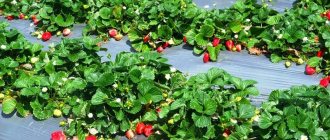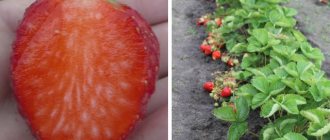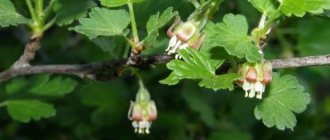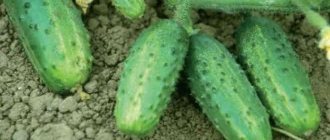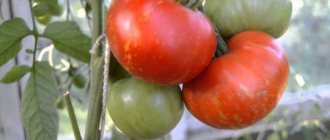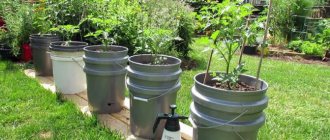Domestic strawberry varieties are not always in demand among gardeners. In the pursuit of foreign innovations, one’s native and no less high-quality products are forgotten. For example, the Firework strawberry produces generous clusters of fragrant berries with a minimum of care, and at the same time is practically unknown to summer residents and is very poorly represented in nurseries.
Description of the variety
Fireworks strawberries are successfully cultivated in the Central Black Earth Region, in the climatic conditions of the Volga-Vyatka, East Siberian regions, and the North Caucasus. Fireworks are a mid-season variety. The fruits begin to ripen by the end of June, the season lasts until mid-July.
Bushes
The spherical bushes of Fireworks have weak foliage. They are distinguished by numerous thick peduncles that can produce up to fifty ovaries. An elegant bush looks like a bright “berry fireworks”. Peduncles are located below the leaves. The flowers are bisexual, no additional pollination is required. Arborization is active.
Berries
The shape of the berries is classic - truncated-conical, with a short neck. The average fruit weight is 20-30 g. Individual specimens can grow larger. From harvest to harvest the berry becomes smaller and at the last harvest it can be several times smaller. Fully ripe berries have a rich, dark red, almost purple color, both inside and out. The structure of the pulp is dense, juicy, and contains white veins. Acid and sweetness are combined in the optimal ratio. The aroma is pleasant, strawberry, strong and fresh. The tasting score of the variety is very high - 4.8 points.
Strawberry variety Fireworks for universal use. Used fresh, suitable for canning for the winter in the form of compotes, preserves, jams.
When freezing Fireworks strawberries, the shape, color and aroma of the fruit are preserved, but sourness is added.
Productivity
In just 10-15 days you can collect up to 500-700 g of fragrant berries from a bush. When grown for commercial purposes, up to 180 quintals per hectare are collected from large plantations.
The Firework strawberry fruits, removed together with the stem, are convenient to transport. Without loss of commercial quality, they are stored for about a day at a temperature of +20℃.
Features of the plant and fruiting
The variety belongs to the mid-season category: berry ripening begins in mid-late June and lasts until the first ten days of July (in the middle zone). Fruiting is short (1-2 weeks), but intense and friendly.
On bushes intended for fruiting, it is necessary to trim the tendrils regularly to reduce the load on the plant
The bushes are powerful, spherical, erect, with medium foliage. The leaves are dark green, glossy, flat. The flowers are large, white, untwisted. The whisker formation is active, the whiskers are of medium length, green. Peduncles are thick, short: located below the level of leaves; are formed on plants in large quantities (from 15 pieces), due to which more than 50 berries are set and ripened on each bush. The stalks are thick, brittle with large, complex calyxes.
Consumer qualities of berries
The fruits are quite large: in the main collection with an average weight of 13 g, the first ones can gain up to 30-35 g. Their shape is regular - truncated-conical, symmetrical, with a short neck. Ripe berries acquire a rich dark red color and glossy shine.
Berries are used universally: both fresh and for all processing methods.
The pulp is dense, dark red, with a sweet and sour taste and a characteristic strawberry aroma. The taste qualities were rated by professional tasters as dessert - 4.5-4.8 points (out of 5), sugar-acid coefficient - 7.77. According to the originator, the berries contain:
| Nutrients and beneficial substances | Quantity |
| Sahara | 7,3-8% |
| Acids | 1,03-1,2% |
| Vitamin C | 77 mg% |
Based on the results of studies conducted in 2006-2009. on the irrigated plot of the selection department of the Samara Research Institute of Horticulture and Medicinal Plants “Zhiguli Gardens”, the variety was recognized as very promising in terms of yield. Over the course of 3 years of fruiting, Fireworks had a high level of all components of productivity (a large number of peduncles and fruits on the bush, large berries), so experts recommend it for industrial plantings. The average yield is more than 500 g per plant or 155-184 c/ha, the transportability of the berries is good.
Sustainability
In reviews of the Fireworks strawberry, gardeners note among its important advantages its frost resistance and drought resistance, confirmed by expert opinions. According to VSTISP specialists, during field trials from 2002 to 2006 at the collection site of the Kokinsky strong point in the Bryansk region, the variety proved to be medium-winter-hardy.
Many nurseries and agricultural firms are engaged in the production and sale of planting material.
The variety’s resistance to major crop diseases and pests deserves special attention. “Fireworks” is practically not affected by:
- powdery mildew;
- verticillium wilt;
- late blight;
- gray fruit rot (yield loss 0-2%);
- spider mites (0 points – tolerant).
The only drawback of the variety is its high degree of damage to white and brown leaf spots (3-4 points out of 4) under stressful conditions (sharp hydrothermal changes) during the growing season.
a brief description of
The creators of the Firework strawberry, employees of the All-Russian Research Institute of Genetics and Selection of Fruit Plants named after I.V. Michurin, warn: the whole bouquet of taste and aroma will reveal itself only when fully ripe. Therefore, impatient summer residents are not always able to fully appreciate the qualities of the variety, but this strawberry has many advantages.
Advantages of the variety
- beautiful, juicy, sweet fruits;
- stable yield that does not depend on the weather;
- the ripening process of strawberries will not be extended over time;
- berries are good fresh, in preparations;
- transportability is excellent;
- in the absence of artificial watering, the bushes will not dry out;
- high winter hardiness;
- increased immunity to most strawberry diseases.
Disadvantages of the variety
- it is necessary to regularly remove the mustache; this feature can also be considered an advantage, because there are no problems with propagation of the variety;
- The berries are medium in size, becoming smaller towards the end of fruiting.
Even with the existing shortcomings, this variety is successfully grown not only in dachas, but also on farm plantations.
Advantages and disadvantages of the variety
- Positive traits:
- frost and drought resistance;
- good immunity;
- high taste qualities;
- versatility of fruits;
- unpretentiousness to growing conditions and care;
- abundant and friendly fruiting;
- the yield does not fall for 4 years when the bush grows in one place.
- Most gardeners do not find any shortcomings in the variety. But some believe that the negative qualities of culture include:
- short fruiting period;
- the need to trim your mustache regularly;
- small fruits.
Landing
The best time to plant Fireworks garden strawberries in a temperate climate is the end of April, when there is no threat of return frosts. In the southern regions, where spring is hot and short, planting in September is preferable. It is optimal to plant seedlings with a closed root system in late July - early August. The rosettes will have time to take root, develop and bear fruit next year. Cloudy days are chosen for planting plantations, especially in summer. The beds are laid out in sunny, dry areas protected from drafts.
The soil structure is brought to a loose, fertile state. Peat soils are not suitable for strawberries. On poor soils the berries will be small and fresh. They increase the nutritional value of the soil by deep digging and adding 8-10 kg. humus and 500 g of ash per square meter.
It is more convenient to form beds about 1 meter wide (enough to form two rows), raising the sides to prevent water stagnation. At a distance of 25-30 cm, holes are made in the row and filled with water. Seedlings previously disinfected in a solution of potassium permanganate are deepened to the level of the root collar. Young plants need regular watering; at first, irrigation is carried out daily.
Description of garden strawberry variety Fireworks
Strawberry Fireworks was born in the city of Michurinsk, at the Federal Scientific Center named after I.V. Michurin. Its “parents” are the well-known strawberry varieties Zenga Zengana and Redcoat. In 2000, the variety received a “registration” in the State Register and is recommended for the Volga-Vyatka, Central Black Earth, North Caucasus and East Siberian regions. The climate of these areas varies significantly, which indicates the high adaptability of the variety to external conditions. This is evidenced by the successful experience of growing this strawberry in the middle zone and in the Volga region.
Fireworks is a mid-season variety: the first berries begin to be picked at the end of June. The variety is distinguished by its uniform ripening of the crop: the entire fruiting period usually fits into two weeks.
The bush is large, erect, almost spherical in shape, the foliage is medium. The root system is powerful. The mustache is green, medium in size, and has a moderate number. The leaves are dark green, flat, and have a significant shine. The flowers are white, large. Peduncles of medium size. The stalks are thick. Peduncles mainly hold the berries; their lodging on the ground is small.
It is important that the berries ripen almost simultaneously
The berries are medium-sized, weighing about 13 g (the first ones weigh up to 35 g). Their shape is regular, close to conical with a blunt apex, the color is dark red with a shine, and can even be cherry. The pulp is dense, also dark red, fleshy, with a lot of juice, excellent sweet and sour taste. The rating given by the tasters was 4.8 points.
The yield is quite high: when tested in field conditions, an average of 160 centners were harvested per hectare. In amateur gardens, with careful care, up to 1 kg of berries are collected from one plant. The variety is highly resistant to fungal diseases and is relatively winter-hardy. In seasons characterized by “temperature swings”, leaf spot disease is possible.
Growing and care
Caring for Fireworks strawberries is easy. Successful cultivation is possible with timely rejuvenation of the plantation every 3-4 years.
Watering
The first waterings of Fireworks begin at the end of April. In hot weather, strawberry bushes need to be watered 2 times a week. During rainy periods, to avoid the development of gray rot, watering is stopped. But at the end of fruiting there is no need to stop irrigation; it is necessary to give the bushes the opportunity to develop full-fledged flower stalks for the next year. In autumn, strawberries are watered once every 10 days. The best time is early morning.
It is advisable to water by drip, at the root, avoiding water getting on the leaves.
Loosening, weed control
Weeds take away nutrition and moisture from strawberries, so you need to remove them regularly. Loosening the soil is necessary in order to remove the dense crust that prevents the roots from breathing.
Mulching with agrospan will allow the gardener not to waste time on loosening and weeding. The material is not cheap, as is another mulching option - using organic mulch. Straw, sawdust, leaves, and remains of herbal infusion will serve as excellent mulching material. The only thing is that mulch needs to be used wisely. Remember - organic mulch, when it rots, binds nitrogen from the soil and only then releases it back into the ground. On poor soils, mulching must be accompanied by nitrogen fertilizing. In addition, strawberries are a plant that loves warmth; black soil warms up faster than the same soil, but through straw. Mulching can shift the start of fruiting to a later date.
Removing a mustache
The peculiarity of the variety is that it is necessary to regularly remove numerous whiskers from Fireworks. They grow quickly, thicken the bed and take away strength from the mother bushes. The mustache should be trimmed with pruning shears and not pulled out, so the likelihood of damage from the horn will be minimized.
Top dressing
Fertilizing begins in the second year after planting; in the first season of Fireworks strawberries, the fertilizer applied during planting is sufficient. Use organic fertilizers or ready-made mineral complexes. In early spring, nitrogen-containing mixtures are used, which will give increased growth of green mass, in September - phosphorus and potassium. Before flowering begins, watering is combined 2-3 times with the addition of a solution of mullein and wood ash.
Pest and disease control
Strawberries Fireworks are not susceptible to such dangerous diseases as powdery mildew and verticillium wilt, and are tolerant to spider mites. Under unfavorable weather conditions, there is a risk of white and brown leaf spots.
By observing crop rotation and a properly organized irrigation system, the likelihood of diseases and pests appearing on strawberries is significantly reduced.
Copper-containing preparations are used as a preventive measure against fungal diseases. Strawberries are processed in early spring, as soon as a couple of young leaves are released.
Preparing for winter
Garden strawberries Fireworks have shown the ability to winter without shelter at temperatures down to -25℃. Covering with straw and spruce branches is carried out taking into account the climatic conditions of the region. Plants that are protected from the winds, which blow snow away from the plantings, are in a winning situation.
Strawberry variety Fireworks
The strawberry variety Fireworks is one of the domestic varieties with a medium ripening period and a universal harvest purpose.
The bushes are quite powerful, upright, spherical in shape, with average foliage. Mustaches of medium length, green in color. The originator of this variety, worthy in all respects, is the All-Russian Research Institute of Genetics and Selection of Fruit Plants named after I.V. Michurin. The “Fireworks” variety was included in the State Register of the Russian Federation quite a long time ago and has become most widespread in home gardening in the Central Black Earth region of our country.
Plant characteristics
The leaves are dark green, flat in shape, with a characteristic shine. The flowers are large in size, white, without petal torsion. Peduncles are medium in size, located below the level of the leaves. Productivity is high and constant. Fruiting is very stable.
Description of the berry variety
Fully ripened and ready for picking, the berries have an average weight of 11-13 g, regular shape and a short neck. The surface of the ripe berry is dark red in color, with a pronounced gloss. The berry is recommended for fresh use and is perfect for making jams and preserves.
The pulp of the ripe berry is dark red in color, dense in consistency, and sour-sweet in taste. The average sugar content is just over 7%. The acidity of the pulp does not exceed 1.2%. The amount of vitamin C is 77 mg/%. According to the tasting results, the berries scored 4.8 points. Average yields do not exceed 160−161 c/ha. The variety is characterized by resistance to fungal diseases and has relatively high winter hardiness.
Also read: Features of pruning grapes in spring
Planting and growing
It is recommended to plant Fireworks strawberries in August-September or early spring, preferably in cloudy weather. The ridges must be located in areas that are well protected from gusty winds. It is advisable that in winter the ridges be covered with a layer of snow by 25–30 cm. Only the largest and most healthy rosettes with a well-developed root system should be planted.
The area should not have any shadows
You should pay attention to the soil moisture indicators on the ridges allocated for growing this berry crop. Garden strawberries of the “Fireworks” variety can be grown from strawberry tendrils or by dividing the rhizomes of this berry crop
Almost any type of fertile soil, except peat soils, is well suited for planting strawberry seedlings. In order to obtain the best possible results, it is recommended to add humus and wood ash during deep digging of the soil.
For planting Fireworks strawberries, it is advisable to arrange ridges, the optimal width of which is no more than one meter, and the height can vary depending on the characteristics of the soil and the level of groundwater in the area. The length of the strawberry bed depends entirely on the gardener’s preferences, but should not negatively affect plant growth or complicate the care of the berry crop.
To get a high yield of high-quality berries when growing garden crops in open ground, it is necessary to carry out regular watering and prevent both the soil from drying out and being too waterlogged. Strawberries are fertilized at least three times per season and are always accompanied by abundant irrigation measures. Caring for berry plantations includes weeding, loosening and timely and correct preventive spraying of strawberry bushes.
Also read: Remontant beardless strawberries in the garden plot
Watering and fertilizing strawberries (video)
Berry plantings almost never get sick and winter very well in many regions without the use of shelter. The berry bushes are quite large, but not gigantic in size, and form mustaches, which greatly facilitates the independent propagation of the berry crop without the cost of purchasing planting material. High consumer ratings and positive reviews from gardeners allow us to recommend “Firework” as a promising variety for growing in garden plots and household plots.
Attention, TODAY only!
Did you find an error in the text? Please select it and press Ctrl+Enter. Thank you!
Rating:
Reproduction
The Firework variety can be propagated in three ways:
- mustache rosettes;
- dividing the bush;
- seeds.
The easiest way is to root mustache rosettes in plastic pots. By the end of August, you can collect a sufficient amount of planting material from a small garden bed. For rooting, loose soil is prepared, which is most often based on peat or coconut substrate.
To divide the bushes, choose strong, healthy specimens of three years of age. The bushes are cut with a sharp knife or pruning shears, leaving at least 2-3 leaves and a developed root system on each part.
Propagation by seeds is the longest and most labor-intensive way. It is used extremely rarely. Seeds are sown for seedlings in February. The boxes are covered with glass or film and opened after germination. When 2-3 true leaves appear, a pick is made. They are planted in open ground no earlier than the end of April.
Strawberries in the ground
Seedlings of the Firework variety are planted in open ground after the onset of stable positive temperatures. But before this, the seedlings are hardened off and prepared for new conditions: they are taken outside, gradually increasing the time spent in the open air. You need to place containers with seedlings in the shade.
After planting, further care of strawberry seedlings consists of regular watering, loosening the soil, weeding, as well as fertilizing and preventive treatment of plants against diseases and pests.
Attention! If the plantings are mulched, it will be much easier to water, loosen the soil and remove weeds.
Rules for planting strawberries in the ground can be found here:
Reviews
For many years I have been planting 2 varieties of strawberries: Fireworks and Festivalnaya. These varieties are perfectly suited to the conditions of the south of the Urals. The berry is tasty and aromatic.
Fireworks berries are perfect for making jam. The size is small, just enough to fit into a spoon. And the product itself turns out very fragrant and tasty.
Gardeners who grow Firework strawberries on their plots give mostly positive reviews about the variety. If you purchase high-quality planting material and master the simplest agrotechnical techniques, there will be no problems with obtaining fruitful strawberry beds.
How to properly collect seeds and prepare the soil for seedlings?
You can collect seeds of remontant strawberries exclusively from varietal bushes, and not from hybrid plants, since this is the only way to preserve the maternal qualities of strawberries. You should proceed according to this scheme:
- Choose ripe berries by picking them from a productive bush. It is necessary that it fully corresponds to the variety.
- Remove the top layer of skin with seeds using a sharp knife. Place on a plate and wait until completely dry.
- It is best to place the plate in a sunny place with good ventilation - this will allow the berries to dry quickly and not rot.
- After a couple of days, you can collect the seeds and leave the pulp in the bowl.
Seeds of large remontant strawberries on a saucer
Seedlings of remontant strawberries are grown at home, but in extremely rare cases they do this in the garden. The seedlings appear very small and at the same time tender, so in open ground they can easily die.
To prepare the soil yourself, you should mix the following components:
- 0.5 kg of turf soil;
- 0.25 kg sand;
- 0.25 kg of peat.
It’s also good to add a little vermicompost and wood ash to this composition. After mixing, the soil is sent to an oven preheated to 100 degrees and heated for 2-3 hours. This is necessary to destroy weed seeds and insect larvae. Such soil should then be left for 3 weeks, adding beneficial bacteria to it, using the drug Siyanie or Baikal EM1.
How to grow seedlings?
Seed material
Seeds used to grow plants need to be properly prepared. Soaking and stratification are required.
To carry out the soaking procedure, it is recommended to use ordinary paper napkins or cosmetic cotton pads. Water is taken raw and settled. For effectiveness, various growth stimulants are added to it. The seeds are laid out on top of the raw material.
When stratifying, the seed is covered with a second disk or newspaper and placed in the refrigerator for several days (3-4 days). Sowing can be done at any time of the year. If you want to get seedlings by spring, start work between January and February.
Soil and container
To germinate seeds, gardeners use various containers:
- peat cups;
- wooden boxes;
- plastic cups and containers.
You can use other suitable containers that you happen to have on hand.
Containers that were previously used are poured with boiling water with the addition of boric acid or potassium permanganate. New plastic containers must be washed with warm water and any detergent. Several holes must be made at the bottom of each container. It is better not to water small and young shrubs at the root, but to place them in a container in a tray with water to nourish the roots.
Strawberries love fertile and light soil. It is recommended to buy a complex mixture at a garden store or make it yourself.
When germinating, the seeds are not sprinkled with soil. The seed material is carefully laid out on the surface of the moist soil. After the seeds have been loaded, the container is covered with thick transparent film or glass.
The containers are placed in a warm room with a maximum temperature of up to 25 degrees Celsius. It is necessary to take care of a sufficient amount of light. If there is a deficiency, artificial sources are used. If the seeds have successfully passed stratification, the first shoots will appear in about 2-3 weeks.
As soon as you notice sprouts, open the cover above the container a little to let in fresh air, but it is still too early to remove it completely.
The minimum daylight hours should be 10-12 hours a day. It is better to use phytolamps as additional light sources. Optimal temperature conditions are about 20 degrees Celsius above zero.
Watering is carried out only if the top layer of soil is dry. Moisten the soil as carefully as possible using a spray bottle. Sprinkle the soil with a tiny dose of clean water. Excessive moisture can cause root diseases.
Features of watering
The procedure for watering seedlings of the “Fireworks” variety is carried out in different ways, it all depends on the stages of development of the bush.
- First, irrigate the soil with a spray bottle after sowing the grains.
- As soon as the seedlings have formed, watering is carried out once every 7 days.
- The frequency of watering increases to once every 3-4 days after the first true leaves appear on the seedlings. Make sure that the moisture reaches the bottom; to do this, place the container in the water.
Boiled water won't help. Melt or rain water is ideal, however, it can only be obtained during the rainy season.
Best places to grow
It is recommended to plant garden strawberries “Tsarina” in the Central regions. However, this does not mean that it cannot be grown in other regions. As already mentioned, sockets take root well in regions with hot or harsh climates. The main thing is to provide the culture with decent care.
The following regions are considered optimal for landing the Queen: Bryansk, Moscow, Tula, Smolensk, Ivanovo and Kaluga regions. In these regions, strawberries bear fruit in the second mid-June to early July.
In the Rostov, Krasnodar, Volgograd, and Astrakhan regions, the Tsarina can begin bearing fruit at the end of May. Neither heat nor heavy rains will interfere with the ripening of berries.
According to reviews from gardeners from the northern regions of Russia, garden strawberries feel great in Siberia, the Urals, Arkhangelsk, Vologda, Kostroma and Magadan regions. Red juicy berries appear on the bushes from the second half of July.
Nuances of caring for the variety
Among the main measures for caring for planted plants are: regular removal of weeds, irrigation, fertilizing, and carrying out preventive procedures.
Watering and fertilizing
In spring, the soil is moistened starting from the last days of April at the rate of 10 liters of water per 1 square meter. In hot weather, strawberry bushes are irrigated 3-4 times a week, and in the fall, once a week is sufficient. It is better to choose the time for watering in the morning, and do not allow water to get on the leaves.
It is not worth adding nutritional compounds in the first year after planting. They begin to carry out feeding procedures only from the second year, using either organic fertilizers or ready-made mineral complexes. In early spring, nitrogen-containing mixtures are used, in September - phosphorus-potassium mixtures. Before flowering and after harvesting the fruits, it is effective to add humus, wood ash or a manure solution.
Weeding, loosening, mulching
To prevent weeds from taking away nutrition from strawberries, you need to remove them regularly. Loosening the soil eliminates oxygen starvation of the roots. The presence of mulch under the bushes helps retain moisture in the soil.
Harvesting, storage and transportability
Rules for harvesting and storing crops:
- Berries are collected once every 1-2 days. The fruits should not be overripe - they will be unsuitable for transportation and storage.
- The collection takes place only in dry weather. Berries stored in containers must be completely dry.
- Berries with signs of rot or other diseases are set aside.
- If the berries are intended for storage or transportation, it is better to pick them with the stalk.
- The collected berries are immediately put into containers for storage/transportation - there is no need to transfer the fruits again. Suitable containers are plastic or wooden boxes.
- Store the crop at a temperature of no more than +4 °C.
Growing garden strawberries
You should not delay planting; it is done in early spring, immediately after the earth warms up. Planting for the winter occurs at the end of August; at later dates, the plant’s resistance to frost may decrease.
Selecting a site for planting and preparing the soil
Strawberries of the Vikoda variety are not picky about the type of soil, but this indicator affects the yield; preference is given to chernozem, gray forest soils and light loamy soils. The optimal predecessors on the site are onions and garlic, cereals. The best conditions for the Vikoda strawberry variety are considered to be acidic soil with a pH in the range of 5-6.5.
Before planting, seedlings are “hardened off” - the gardener keeps them in a cool room for 1-2 days. This procedure will make the bushes more resistant to external conditions. Like other varieties of garden strawberries, Vikoda loves the sun, and its yield on the sunny side is much higher, the berries form faster and reach ripeness.
To improve the yield, young strawberries are planted several seedlings in one hole, which will ensure rapid establishment and adaptation of the root system.
Planting young seedlings together with old strawberries also gives good results. When planting, alternate plants so that new ones are surrounded by old ones. This will protect the former from the effects of the wind.
Stages of soil preparation:
- Digging up the area. The earth loosens and becomes soft. In autumn, digging removes pests and saturates the soil with moisture.
- Weed removal is carried out during loosening, which will ensure normal development of the root system and air access.
- Soil nutrition. During the preparation process, up to 5 kg of organic and 40 g of mineral fertilizers are applied per square meter. Excess nitrogen should not be allowed, as this can be detrimental to the plant.
Selection of seedlings
You need to choose strong, healthy seedlings. Optimal parameters of seedlings:
- root collars with a diameter of 6 mm;
- root shoots from 7 cm;
- undamaged apical bud;
- from 3 to 5 leaves.
Planting in stages
It is necessary to plant Vikoda strawberries in cloudy weather, and if this is not possible, shade the seedlings for two weeks after planting.
Description of the landing step by step:
- Holes are formed with gaps between bushes of 40 cm, between rows from 50 to 60 cm. Excessively dense planting is fraught with a lack of light and nutrition.
- Water is poured into the formed holes and planting is performed. Strawberry roots should be placed freely. In order to take root faster, they are tightly covered with soil, leaving a growth point on the surface.
- The soil is compacted and additionally moistened.
- Mulching is carried out to avoid the appearance of crust. Humus is used for this.
When planted in spring, fruiting is expected the following year.
